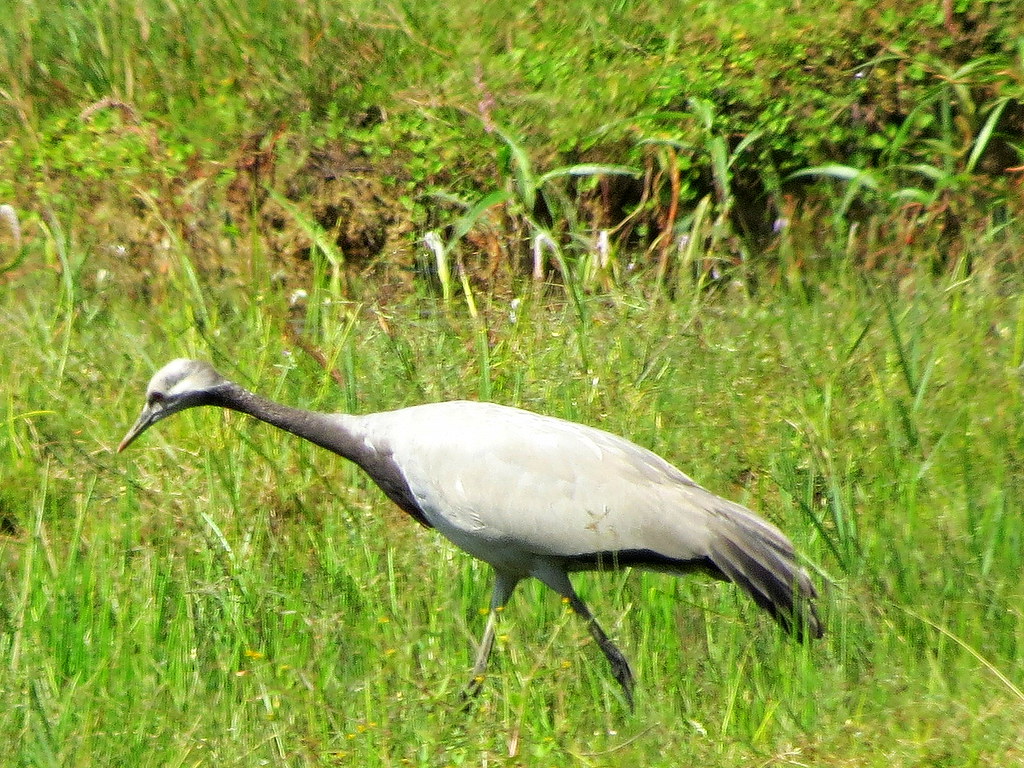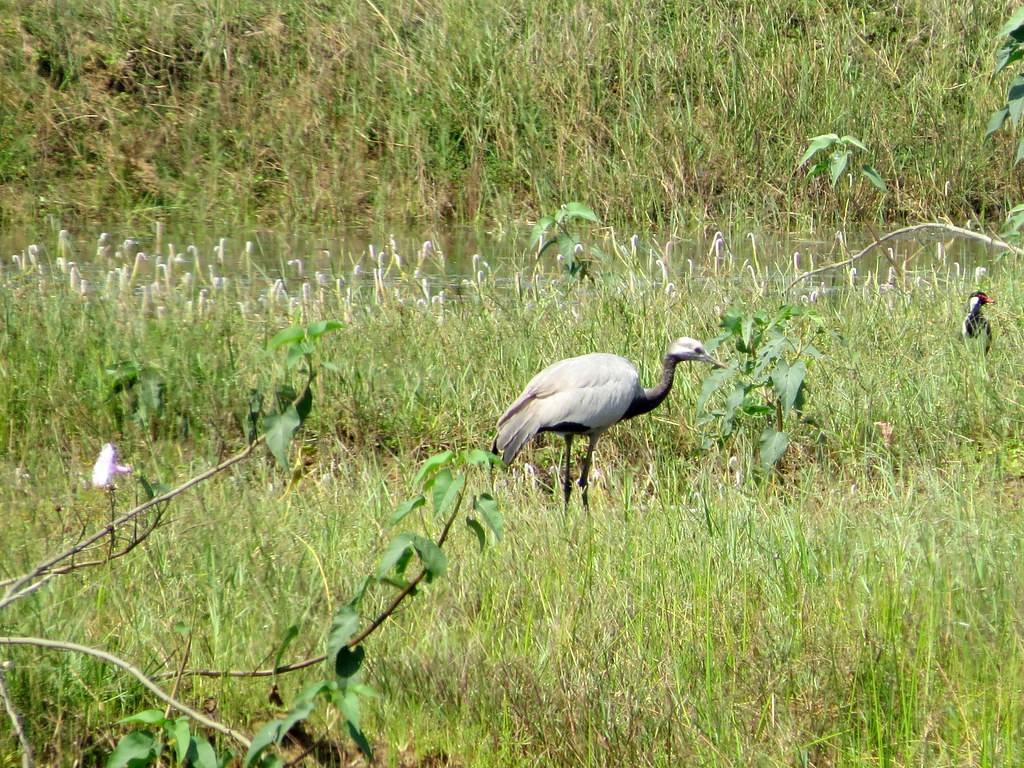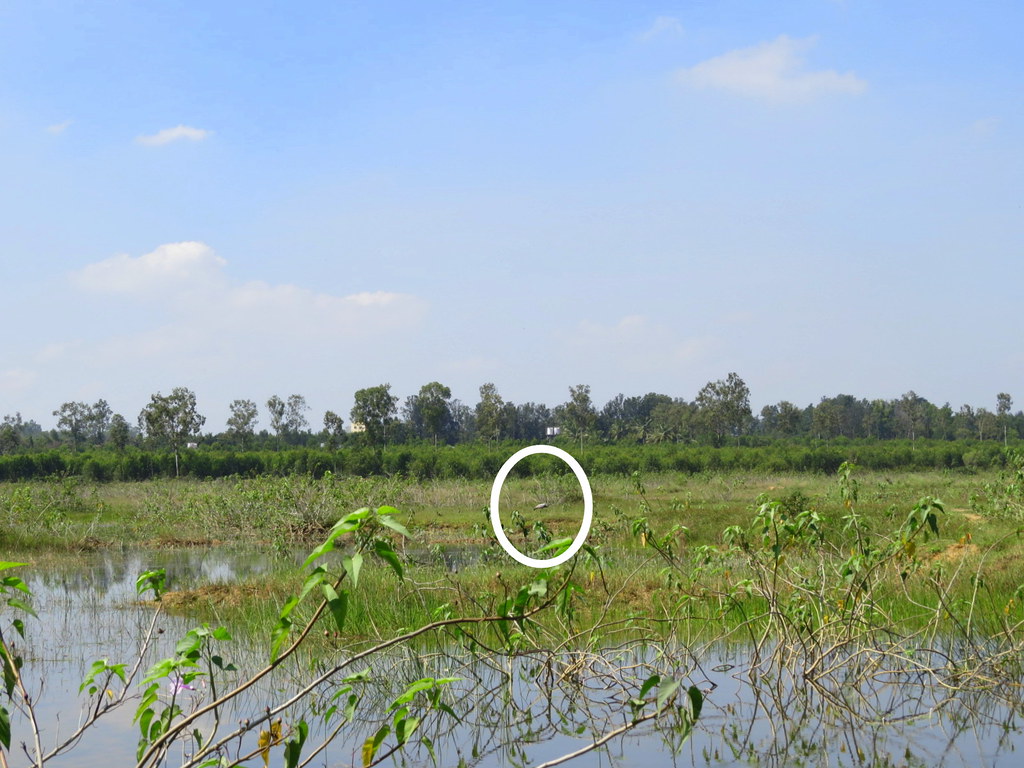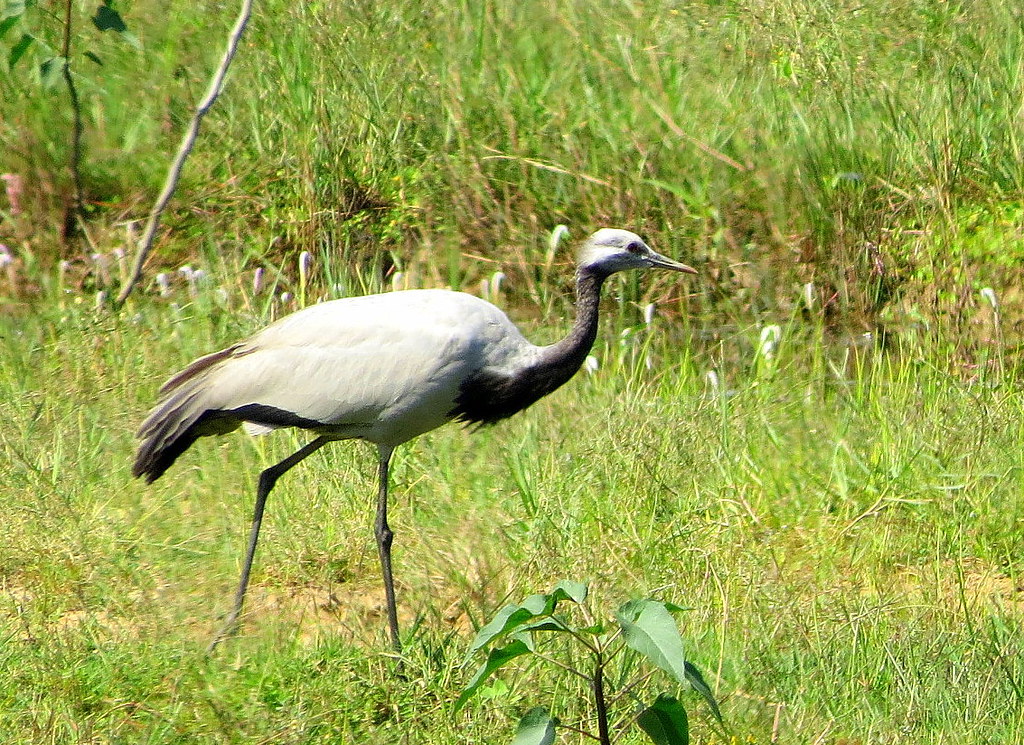Record sighting of Demoiselle Crane, Hulimangala kere, 131215
At the last minute, on Sunday morning, I convinced 20 other birders that instead of going to Valley School, we should bird along the Kaggalipura-Bannerghatta stretch, and then go to check out Hulimangala. And there, at nearly the end of a long birding outing, we saw a migrant which has never before been sighted in the Bangalore area…the
Can you spot the Crane in its habitat?
Here it is:
Here’s the video of its foraging and preening behaviour, which I took on 181215:
Demoiselle cranes undertake one of the toughest migrations in the world….as tough as that of the
From late August through September, they gather in flocks of up to 400 individuals and prepare for their flight to their winter range. During their migratory flight south, demoiselles fly like all cranes, with their head and neck straight forward and their feet and legs straight behind, reaching altitudes of 16,000-26,000 feet (4,875-7,925 m). Along their arduous journey they have to cross the Himalayan mountains to get to their over-wintering grounds in India. Many die from fatigue, hunger and predation from golden eagles.
 Here's the response from N S Prashanth ("Daktre") who is very knowledgeable on the subject:
"Nice record Deepa! I see that the most recent southern Karnataka record is by Shivaprakash from Kollegal (south-west of Bangalore). He includes the following interesting notes on its previous rare sightings in and around Mysore as comments in his record (see linked checklist). He too has sighted a solitary bird amid Black-headed Ibis. Thought you may find this useful.
"These have been recorded at Yelandur & Nanajangudu (nearby area) reported by Phythian-Adams (1940), Asian Mid-winter waterfowl census 23.1.1992 at Maddur Kere near the place where earlier recorded by VIjayalaxmi Rao, Guruprasad P & others and on 28.01.2001 in KRS backwaters by Shivaprakash A, Ramesh S & Mohankumar M.
References:
Phythian-Adams, E. G. 1940. Small game-shooting in Mysore. J. Bombay Nat. Hist. Soc. 41: 594-603
Shivaprakash, A. 2002a. Re-occurrence of Demoiselle Crane in Mysore district. Newsletter for Birdwatchers: 42(1):8"
And he also gives the reference list on eBird,
here
Here's the response from N S Prashanth ("Daktre") who is very knowledgeable on the subject:
"Nice record Deepa! I see that the most recent southern Karnataka record is by Shivaprakash from Kollegal (south-west of Bangalore). He includes the following interesting notes on its previous rare sightings in and around Mysore as comments in his record (see linked checklist). He too has sighted a solitary bird amid Black-headed Ibis. Thought you may find this useful.
"These have been recorded at Yelandur & Nanajangudu (nearby area) reported by Phythian-Adams (1940), Asian Mid-winter waterfowl census 23.1.1992 at Maddur Kere near the place where earlier recorded by VIjayalaxmi Rao, Guruprasad P & others and on 28.01.2001 in KRS backwaters by Shivaprakash A, Ramesh S & Mohankumar M.
References:
Phythian-Adams, E. G. 1940. Small game-shooting in Mysore. J. Bombay Nat. Hist. Soc. 41: 594-603
Shivaprakash, A. 2002a. Re-occurrence of Demoiselle Crane in Mysore district. Newsletter for Birdwatchers: 42(1):8"
And he also gives the reference list on eBird,
here
 Here's the factsheet for this bird:
Class AVES
Order GRUIFORMES
Suborder GRUES
Family GRUIDAE
Name (Scientific)Grus virgo
Name (English) Demoiselle crane
Name (French) Grue demoiselle
Hindi: Karkara, Koonj
Here's the factsheet for this bird:
Class AVES
Order GRUIFORMES
Suborder GRUES
Family GRUIDAE
Name (Scientific)Grus virgo
Name (English) Demoiselle crane
Name (French) Grue demoiselle
Hindi: Karkara, Koonj

Here is a beautiful video (link provided by David d’Costa), showing how these birds migrate at such incredible heights, crossing the snowy peaks:
Here’s Prem Prakash Garg’s video of what I think is the male, taken the next day (14 Dec 2015)
I have since got information that there are at least two individuals on the lake. But here’s the first one sighted!





